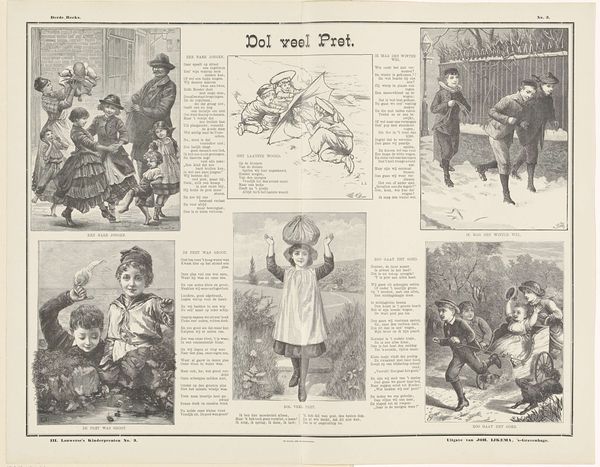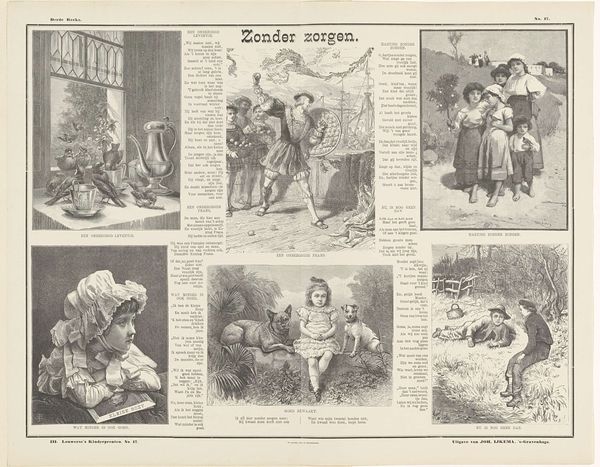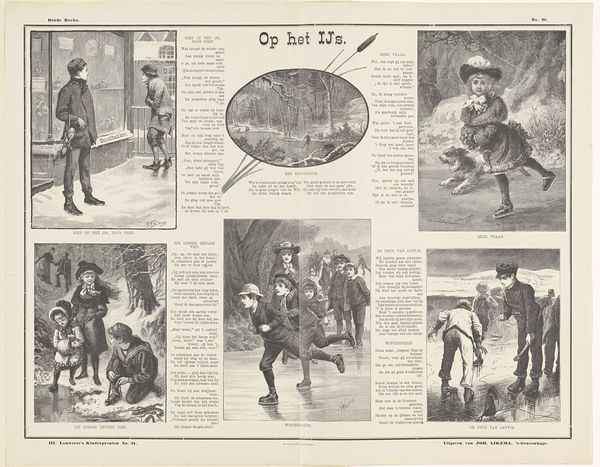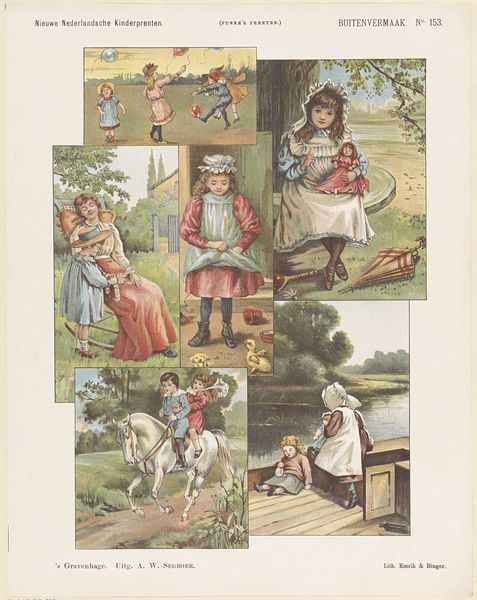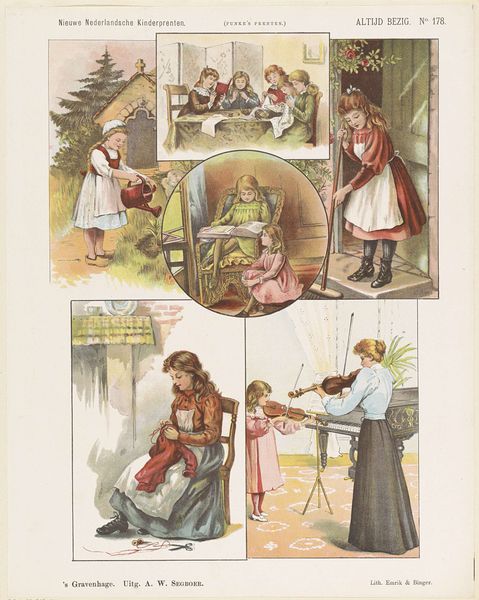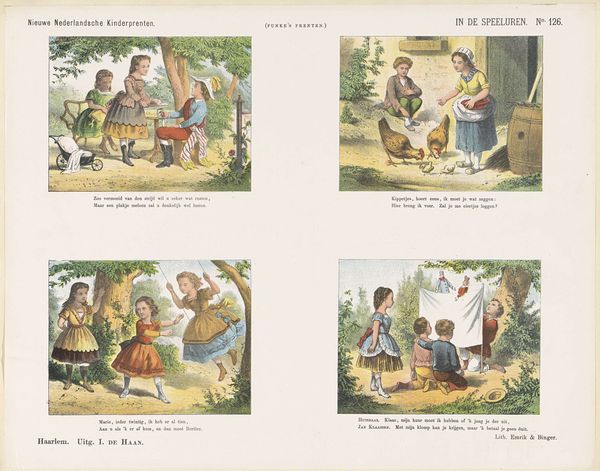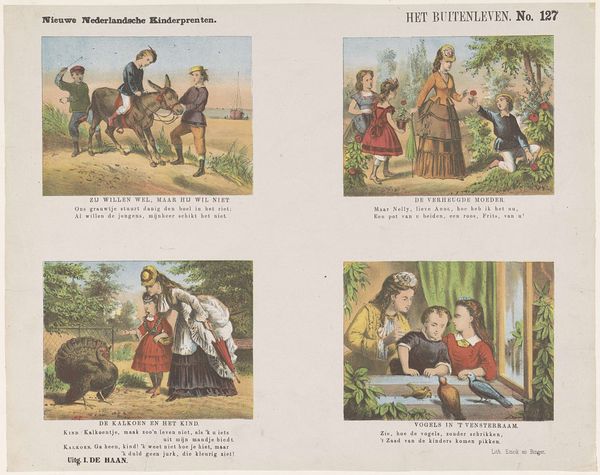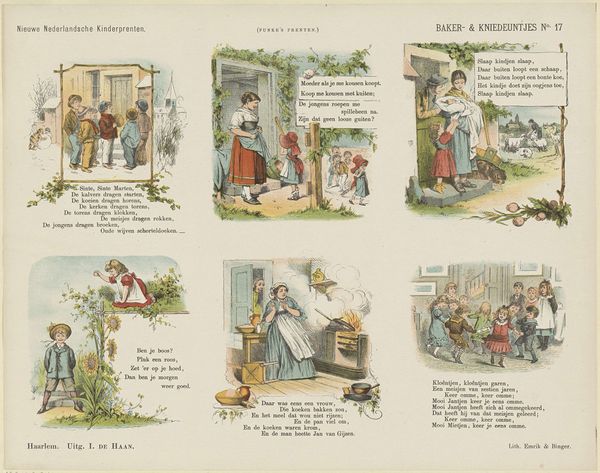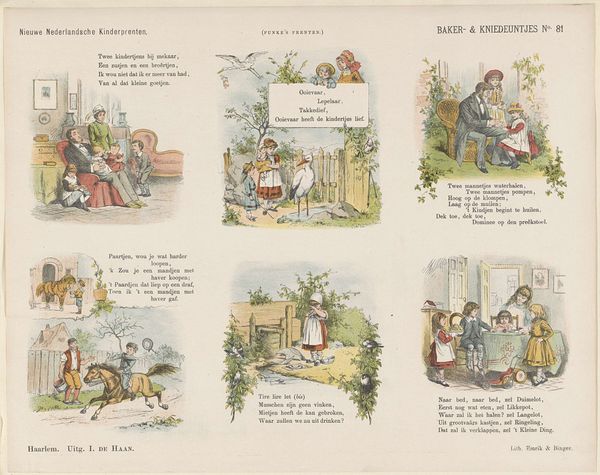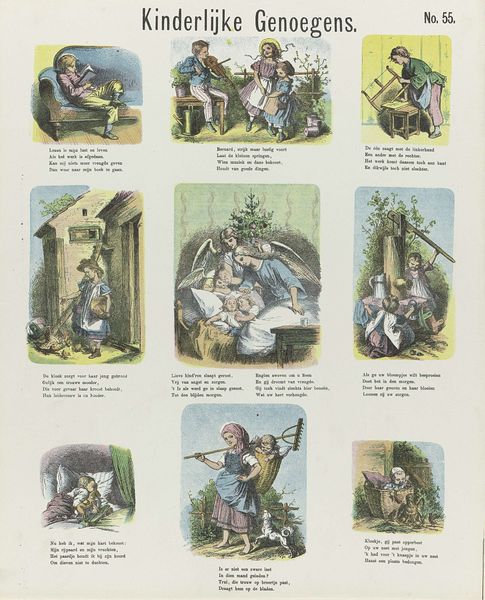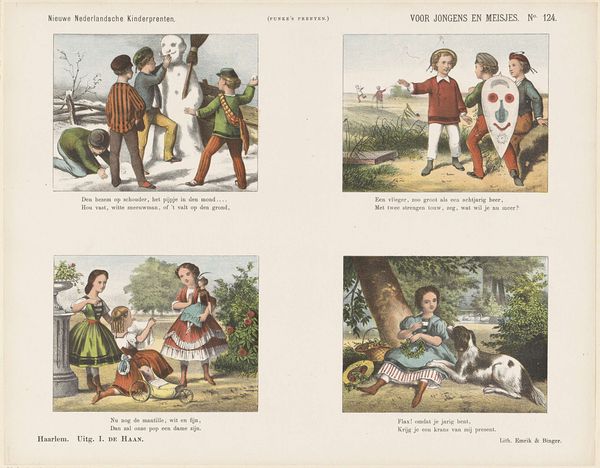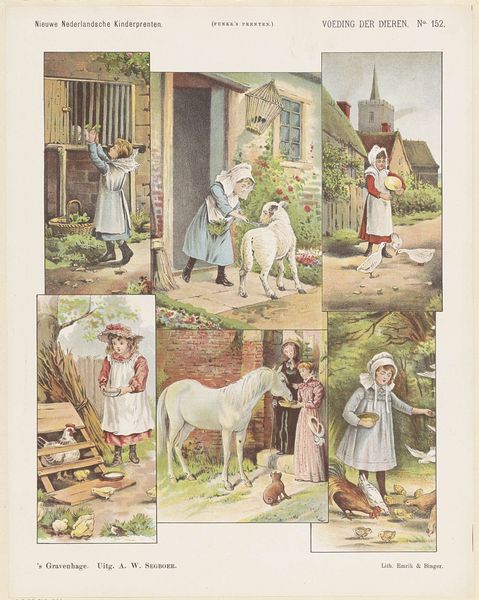
drawing, print, engraving
#
drawing
#
narrative-art
# print
#
genre-painting
#
engraving
Dimensions: height 430 mm, width 550 mm
Copyright: Rijks Museum: Open Domain
Editor: Here we have Moritz Klinkicht’s print, "Zoo werken wij," created sometime between 1892 and 1905. It's a fascinating engraving, reminiscent of a page from a children's book, divided into vignettes depicting children engaged in various activities. There is a lovely graphic quality to it, almost newspaper-like. What strikes you about this piece? Curator: What immediately captures my attention is the materiality of the work itself – the deliberate act of engraving and printing. Consider the socio-economic context: printed matter like this would have been relatively accessible. What labor went into producing something for mass consumption, intended to instruct and perhaps even instill certain values? Editor: So you're looking at it in terms of production and how it would have been used at the time? Curator: Precisely. It begs questions about the consumption of images and the distribution of printed materials during that period. What’s being communicated about childhood, and how does the very process of printmaking reinforce those ideas through repeated image circulation? Look closely – what behaviors are modeled? What are the children *doing*? Editor: Well, some appear to be cleaning, one's writing, one is carrying a tea service...they’re all engaged in tasks. It almost looks like a catalogue of ideal activities for children. Curator: And what does that say about the social expectations placed on them at that time? The method of reproduction amplifies these messages and ideals through readily available printed images. Think about the function of each image – almost like small gestures of work that accumulate. How are traditional hierarchies challenged, or reinforced, by the depiction of these children doing simple manual labour? Editor: I hadn’t thought about it like that before. It makes you consider how the simple act of printing can have so much cultural significance! Curator: Exactly! And hopefully, this gives you a new way to appreciate this engraving beyond just its aesthetic qualities. It prompts a wider material understanding.
Comments
No comments
Be the first to comment and join the conversation on the ultimate creative platform.
